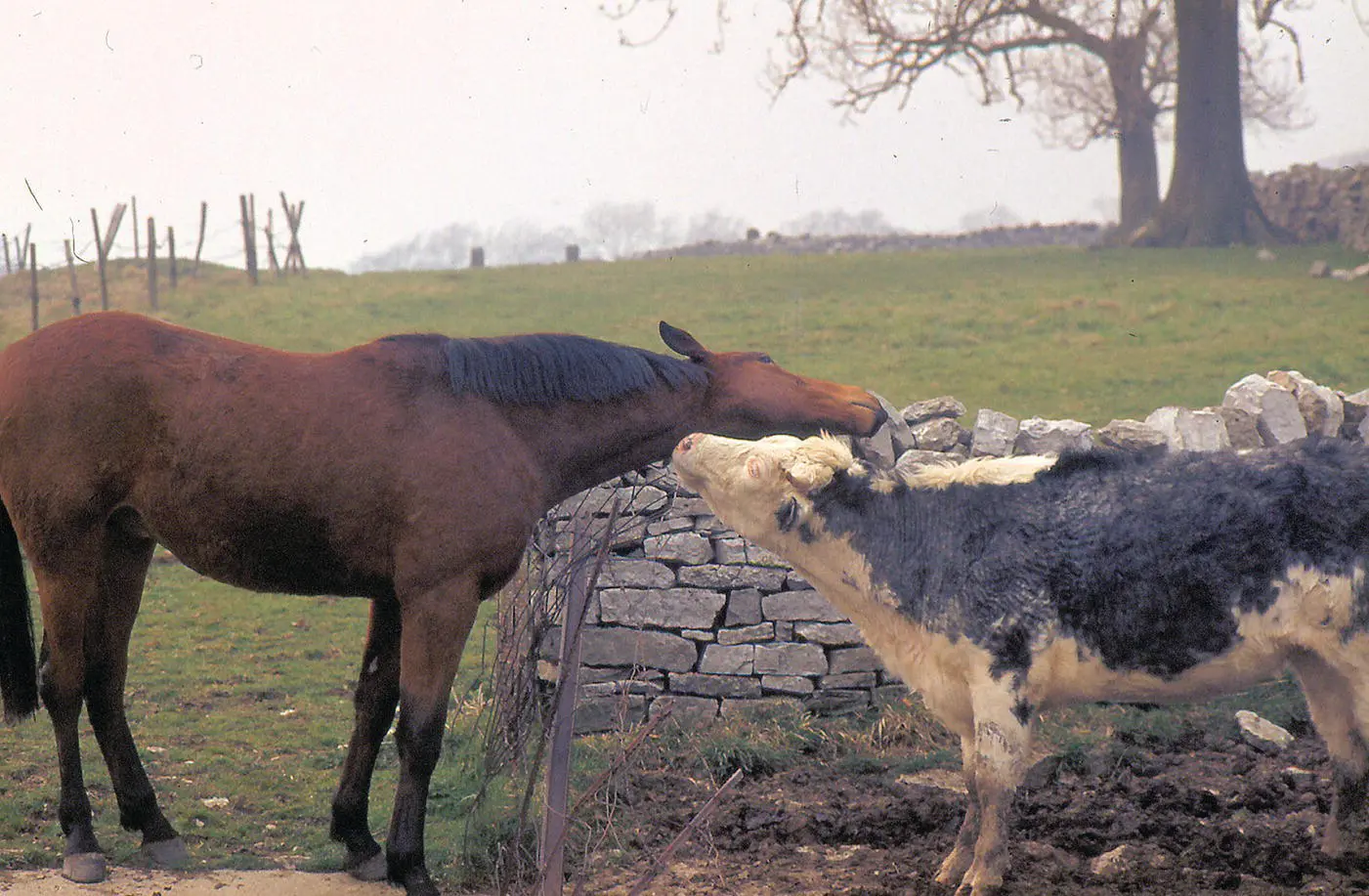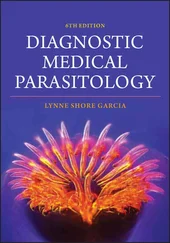Alan Gunn - Parasitology
Здесь есть возможность читать онлайн «Alan Gunn - Parasitology» — ознакомительный отрывок электронной книги совершенно бесплатно, а после прочтения отрывка купить полную версию. В некоторых случаях можно слушать аудио, скачать через торрент в формате fb2 и присутствует краткое содержание. Жанр: unrecognised, на английском языке. Описание произведения, (предисловие) а так же отзывы посетителей доступны на портале библиотеки ЛибКат.
- Название:Parasitology
- Автор:
- Жанр:
- Год:неизвестен
- ISBN:нет данных
- Рейтинг книги:3 / 5. Голосов: 1
-
Избранное:Добавить в избранное
- Отзывы:
-
Ваша оценка:
- 60
- 1
- 2
- 3
- 4
- 5
Parasitology: краткое содержание, описание и аннотация
Предлагаем к чтению аннотацию, описание, краткое содержание или предисловие (зависит от того, что написал сам автор книги «Parasitology»). Если вы не нашли необходимую информацию о книге — напишите в комментариях, мы постараемся отыскать её.
Highly detailed textbook on parasites and parasite relationships Parasitology: An Integrated Approach
Parasitology: An Integrated Approach, 2nd edition
Parasitology — читать онлайн ознакомительный отрывок
Ниже представлен текст книги, разбитый по страницам. Система сохранения места последней прочитанной страницы, позволяет с удобством читать онлайн бесплатно книгу «Parasitology», без необходимости каждый раз заново искать на чём Вы остановились. Поставьте закладку, и сможете в любой момент перейти на страницу, на которой закончили чтение.
Интервал:
Закладка:
In the spirit of integration, we have provided web‐based support material via the publisher’s website. This includes the numerous photographs of parasites that we could not include in the book without increasing its size and cost. There are also quizzes based on each chapter, and some ideas for projects that do not require access to complex laboratory facilities or use laboratory animals such as mice, rats, and rabbits.
Alan Gunn and Sarah J. Pitt, 2021
About the Companion Website
This book is accompanied by a companion website:

www.wiley.com/go/gunn/parasitology2 
This website includes:
Figures
SAQs and answers
MCQs and answers
Practical exercises
1 Animal Associations and the Importance of Parasites
CONTENTS
1.1 Introduction
1.2 Animal Associations
1.2.1 Symbiosis
1.2.2 Commensalism
1.2.3 Phoresis
1.2.4 Mutualism
1.2.5 Parasitism
1.2.6 Parasitoids
1.2.7 The Concept of Harm
1.3 Parasite Hosts
1.4 Zoonotic Infections
1.5 The Co‐evolution of Parasites and Their Hosts
1.5.1 The Red Queen’s Race Hypothesis
1.5.2 Parasites in the Fossil Record
1.5.3 Parasites and the Evolution of Sexual Reproduction
1.6 Parasitism as a ‘Lifestyle’: Advantages and Limitations
1.7 The Economic Cost of Parasitic Diseases
1.7.1 DALYs: Disability‐Adjusted Life Years
1.8 Why Parasitic Diseases Remain a Problem
1.1 Introduction
In this chapter, we introduce the concept of parasitism as a lifestyle and explain why it is such a difficult term to define. We also introduce some of the terms commonly used by parasitologists. Like all branches of science, parasitology uses specialist terms such as ‘intermediate host’, ‘definitive host’ and ‘zoonosis’ that one must understood before one can make sense of the literature. We explain why the study of parasites is so important and why parasitic infections will remain a problem in human and veterinary medicine for many years yet to come.
1.2 Animal Associations
All animals are in constant interaction with other organisms. These interactions can be divided into two basic types: intra‐specific interactions and inter‐specific interactions.
Intra‐specific interactions are those that occur between organisms of the same species. They range between relatively loose associations such as those between members of a flock of sheep and highly complex interactions such as those seen in colonial invertebrates. For example, the adult (medusa) stage of the Portuguese man o’ war ‘jellyfish’ ( Physalia physalis ) may appear to be a single organism but is actually composed of colonies of genetically identical but polymorphic individuals. These colonies divide labour between themselves in a similar manner to that of organ systems within a non‐colonial organism. For example, some colonies are specialised for reproduction, whilst others are specialised for feeding. The term ‘jellyfish’ is in inverted commas because although P. physalis superficially resembles a jellyfish and is a member of the Phylum Cnidaria, it is taxonomically not a true jellyfish. Instead, it belongs to the order Siphonophora within the class Hydrozoa. The true jellyfish belong to the Class Sycphozoa within which there are several orders but in all of these, the medusa stage is a single multicellular organism.
Inter‐specific interactions are those that take place between different species of organism ( Figure 1.1). As with intra‐specific interactions, the degree of association can vary between being extremely loose and highly complex. Odum (1959) classified these interactions on the basis of their effect on population growth using the codes ‘+’ = positive effect, ‘−’ = negative effect, and ‘0’ = no effect. This leads to six possible combinations (00, 0−, 0+ etc.), and these too can be broken down into further subdivisions. Some authors also include a consideration of the direction and extent of any physiological and biochemical interactions between the two organisms. Many terms have been suggested to compartmentalise these interactions (e.g., phoresis, mutualism, predation), but these are merely convenient tags, and they cannot be defined absolutely. This is because there is a huge diversity of organism interactions, and even within a single interaction there are many variables, such as the relative health of the two organisms, that will determine the consequences of the interaction for them both. It is therefore not surprising that there is a multiplicity of definitions in the scientific literature, and it is not unusual for two authors to use different terms for the same type of interaction between species. In this section, we will discuss symbiosis, commensalism, phoresis, mutualism and finally parasitism, with some examples of each.

Figure 1.1 Different species will sometimes co‐operate for mutual benefit.
1.2.1 Symbiosis
The term symbiosis derives from the Greek συμβίωση and is usually translated as ‘living together’. It was originally used in 1879 by Heinrich Anton de Barry to define a relationship of ‘any two organisms living in close association, commonly one living in or on the body of the other’. According to this definition, symbiosis covers an extremely wide range of relationships. Some authors state that both organisms in a symbiotic relationship benefit from the association (i.e., it is [++]) although this is clearly a much more restrictive definition, and it is more appropriately referred to as mutualism. However, some authors consider symbiosis and mutualism are synonymous – this only adds to the confusion. For the purposes of this book, we will keep to de Barry’s original definition.
1.2.1.1 Symbionts
Strictly speaking, a ‘symbiont’ is any organism involved in a symbiotic relationship. However, most scientists tend to restrict the term to an organism that lives within or upon another organism and provides it with some form of benefit – usually nutritional. The association is therefore referred to as a host: symbiont relationship and most symbionts are microorganisms such as bacteria, algae, or protozoa. Where the symbiont occurs within the body of its host, it is referred to as an endosymbiont, whilst those attached to the outside are referred to as ectosymbionts. There are two types of endosymbiont: primary endosymbionts (or p‐endosymbionts) and secondary endosymbionts. Primary endosymbionts form obligate relationships with their host and are the product of many millions of years of co‐evolution. They are usually contained within specialised cells and are transferred vertically from mother to offspring. Consequently, they undergo co‐speciation with their host and form very close host‐specific relationships. By contrast, secondary endosymbionts probably represent more recent host: symbiont associations. In the case of insects, these symbionts live within the haemolymph (blood) rather than specialised cells or organs. Secondary endosymbionts tend to be transmitted horizontally and therefore do not show a close host: symbiont relationship. Horizontal transmission occurs when a symbiont (or parasite) is transmitted from one host to another that is not necessarily related to it.
Читать дальшеИнтервал:
Закладка:
Похожие книги на «Parasitology»
Представляем Вашему вниманию похожие книги на «Parasitology» списком для выбора. Мы отобрали схожую по названию и смыслу литературу в надежде предоставить читателям больше вариантов отыскать новые, интересные, ещё непрочитанные произведения.
Обсуждение, отзывы о книге «Parasitology» и просто собственные мнения читателей. Оставьте ваши комментарии, напишите, что Вы думаете о произведении, его смысле или главных героях. Укажите что конкретно понравилось, а что нет, и почему Вы так считаете.












